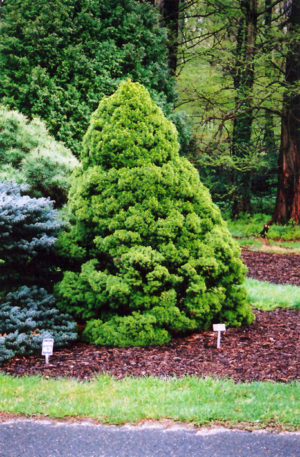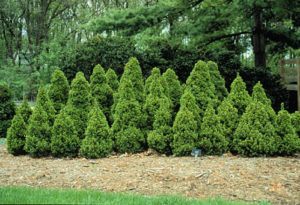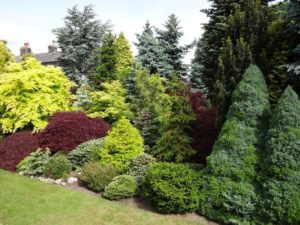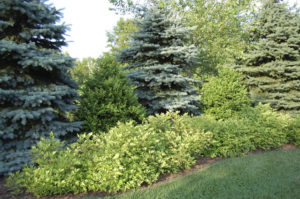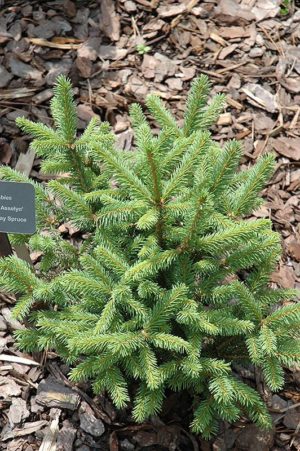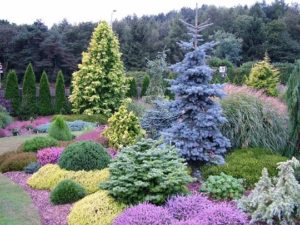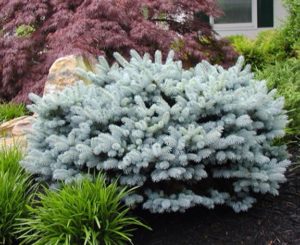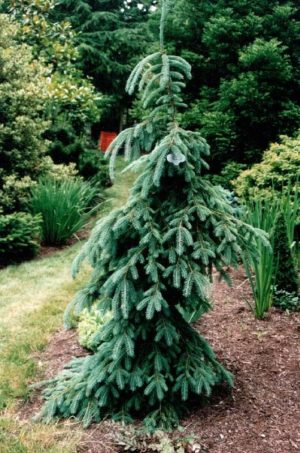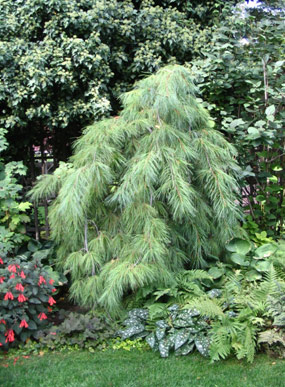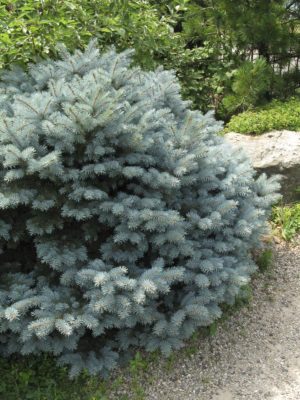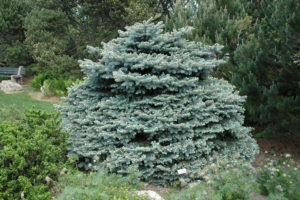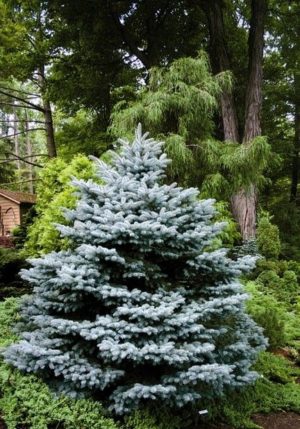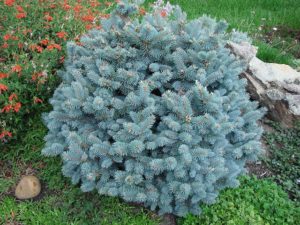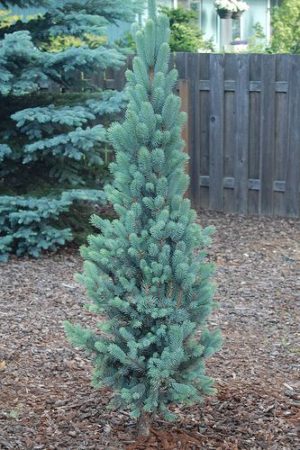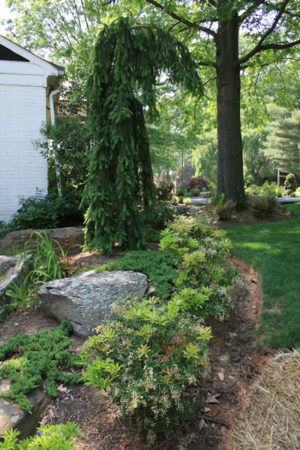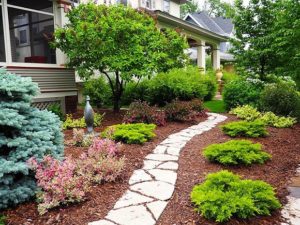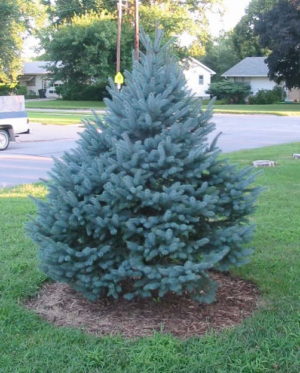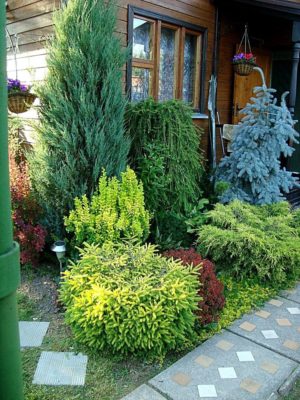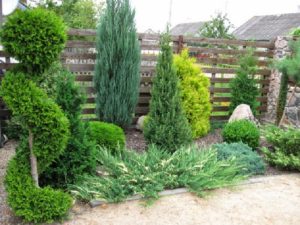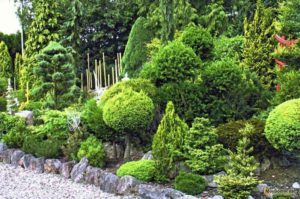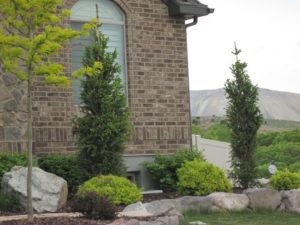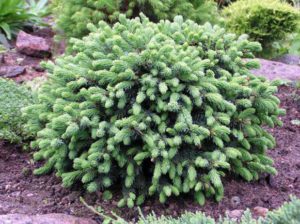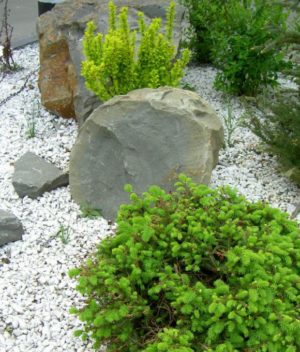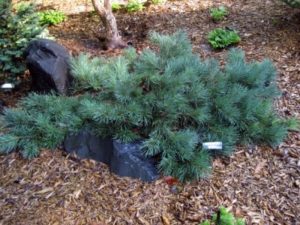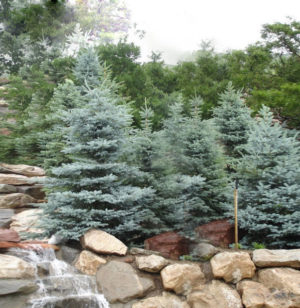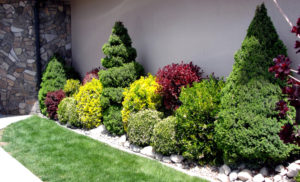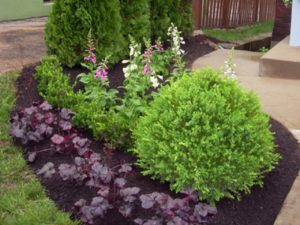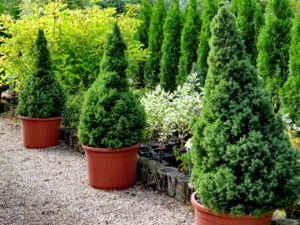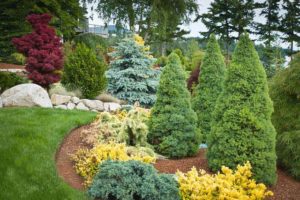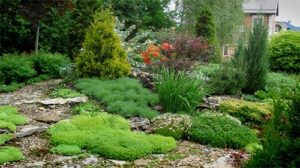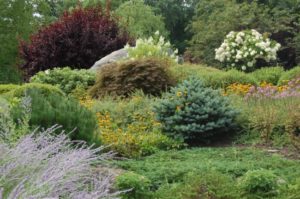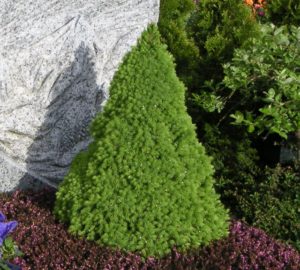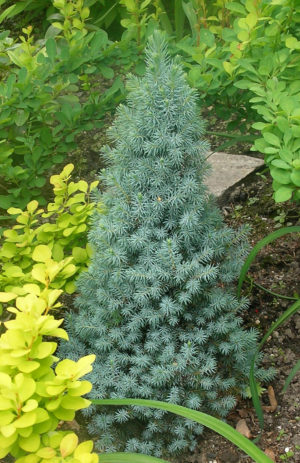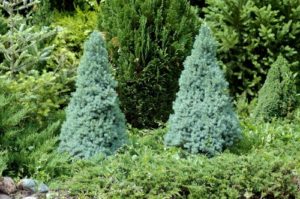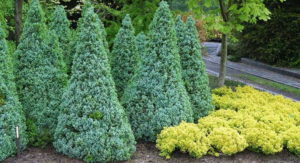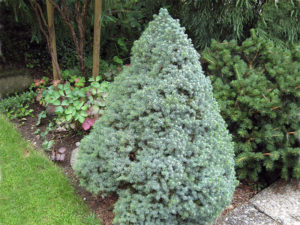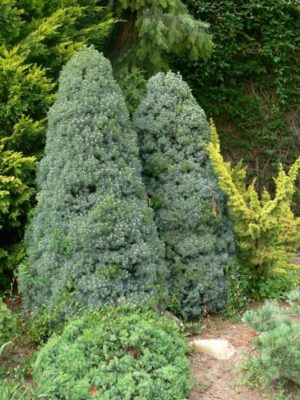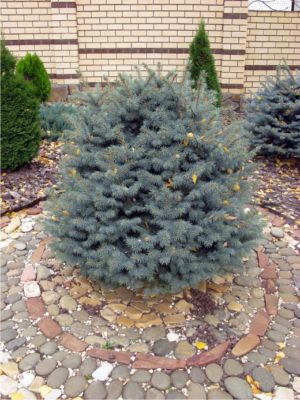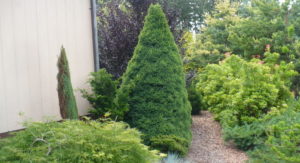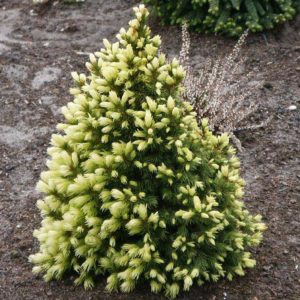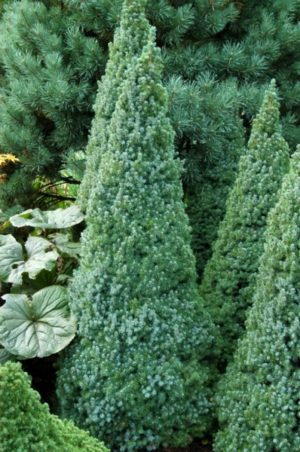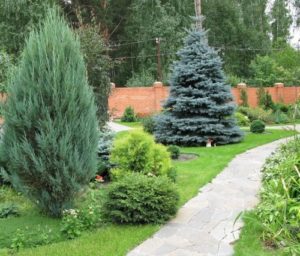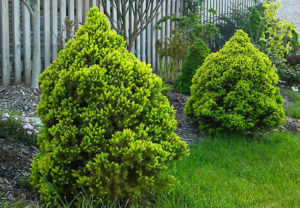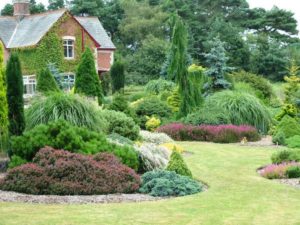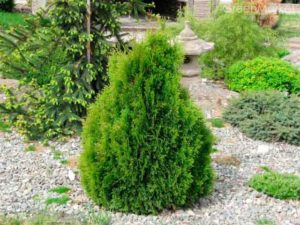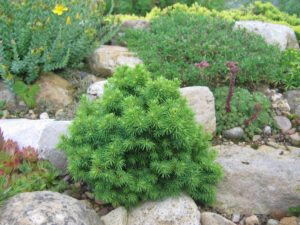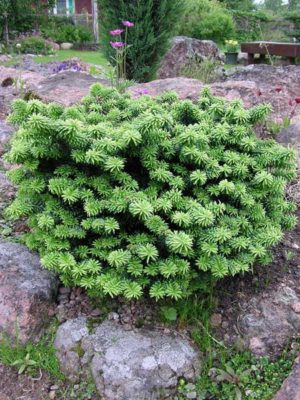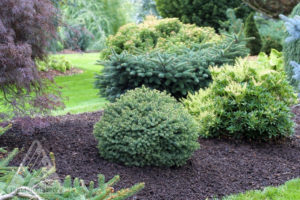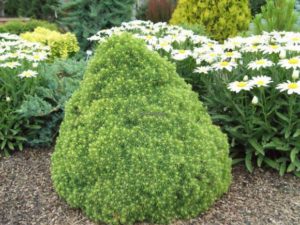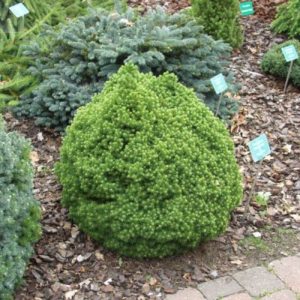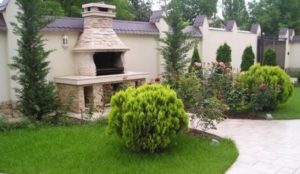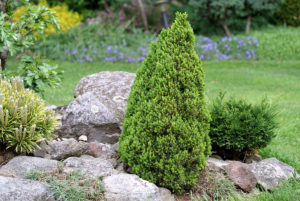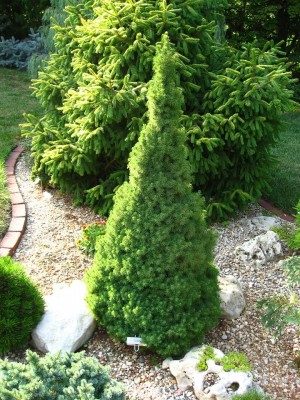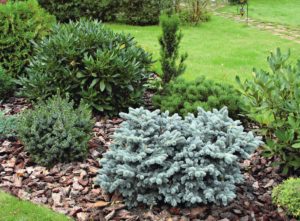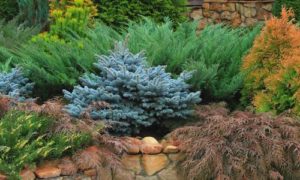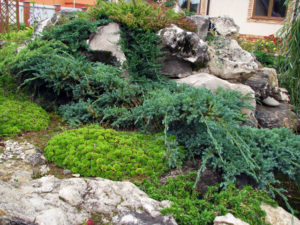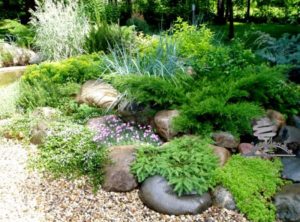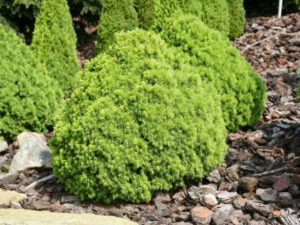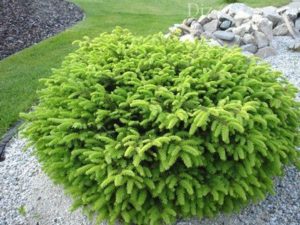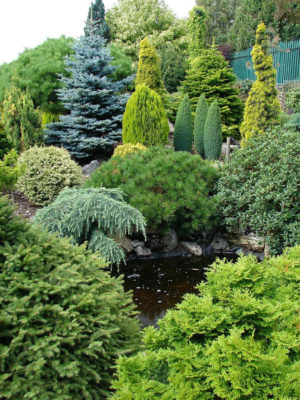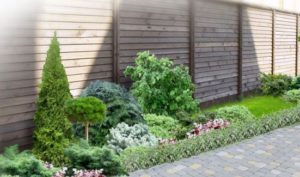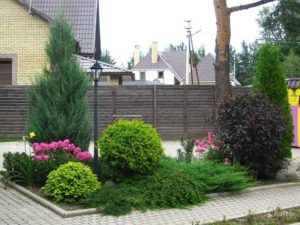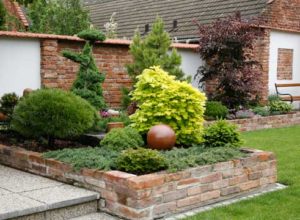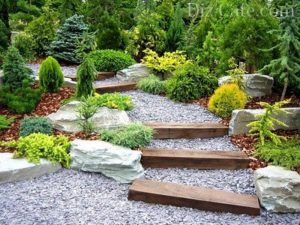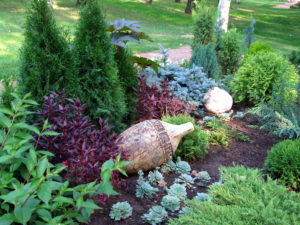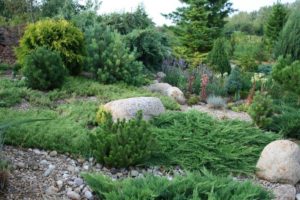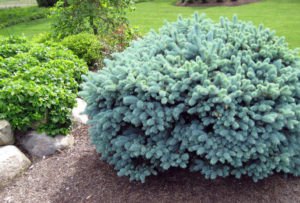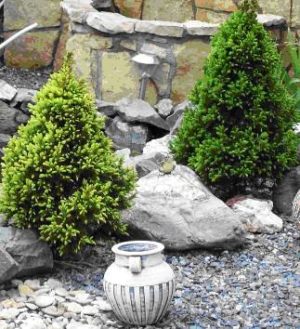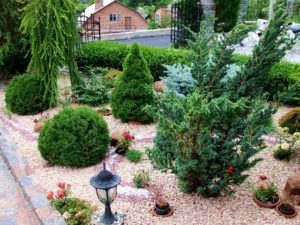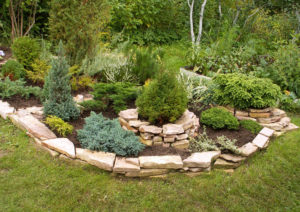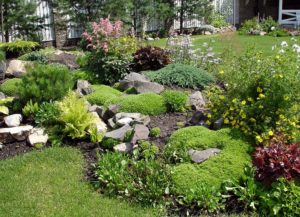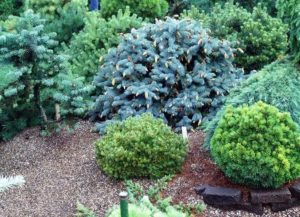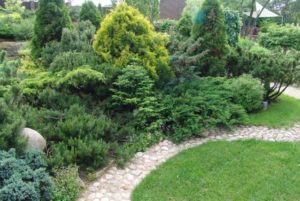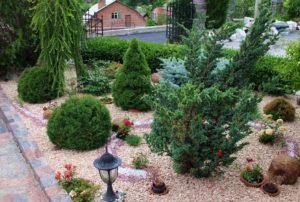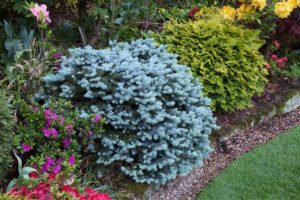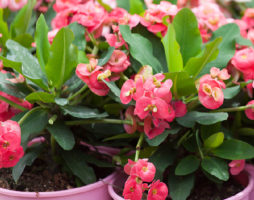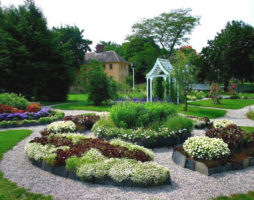Spruce can be considered the most successful material for decorating the landscape of the site. This tree will become a real decoration of the garden or local area.
It will make them bright, expressive and aesthetic. Such an evergreen beauty as a Canadian spruce has generally become a godsend and a lifesaver for professionals in landscape design. It is no worse than common spruce, the photo of which we are used to seeing in advertising landscaping projects, lends itself to the formation of a picturesque crown. Its decorative varieties generally allow you to turn the territory of suburban areas into landscape masterpieces. Well, let's get acquainted with this luxurious representative of the coniferous family and understand the specifics of breeding its varieties.
back to index ↑Canadian spruce: general information
"Any Canadian spruce - daisy, alberta, conic - is a long-liver: it can stand for 500 years"
In nature, this type of spruce is tall. The height of individual individuals can reach up to 30 meters. Of course, you cannot plant such giants along the alley, but dwarf Canadian spruces will be quite out of place in this case. Whatever the height of the tree, it will always be distinguished by the correct conical shape of the crown, and this in itself is a decorative value. The fastest growth of seedlings is observed in the first decade. In young trees, the paws are raised, the crown is dense. In older ones, the branches slightly fall down.

Canadian spruce seedlings
The needles of plants have a bluish tint, which gave rise to another name for foreign guests of our gardens - Canadian gray spruce.
The needles, though short, are quite prickly. Cones on dwarf firs appear once a decade. They have a very beautiful elongated shape, but bear little resemblance to common spruce cones, and the photos confirm this.
Any Canadian spruce - daisy, alberta, conic - is a long-liver: it can stand for 500 years. This type of trees is winter-hardy and drought-resistant.

Canadian spruce is winter-hardy and drought-resistant.
To date, our landscapes are decorated with about 20 subspecies of dwarf spruce of Canadian origin.
back to index ↑Varietal diversity
Canadian spruce Echiniformis
A dwarf plant with a bushy form. The crown is cushion-shaped, can be flat or rounded. The paws are short, their growth is dense, due to which the young individuals have an original spherical appearance. Dwarf Echiniformis does not grow above 60 cm and is up to a meter in diameter. Like the decorative gray conic spruce, Echiniformis grows slowly, giving no more than 2 cm of growth per year. Young shoots are light brown, with a brilliant sheen, elastic. They grow with needles radially. The needles are narrow, thin and short. They are blue-green in color. The root system, although superficial, is very well developed.

Canadian spruce Echiniformis
Canadian spruce Echiniformis prefers to grow in sunny areas, but if necessary, it can adapt well in partial shade.The plant is picky about the soil. It grows equally well in both acidic and alkaline soils. The main condition for this soil to be:
1. Sufficiently hydrated.
2. Rich in nutrients.
3. Fresh.
The advantages of Canadian spruce of this variety include absolute resistance to air pollution, temperature extremes, including frosts inherent in our climate.
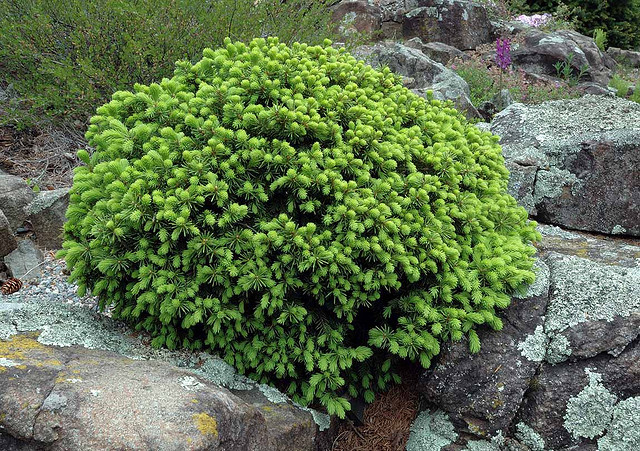
Echiniformis spruce is resistant to temperature extremes
Scope of application
Echiniformis dwarf spruce is an excellent solution for decoration:
- alpine slides;
- rocky gardens;
- rockeries;
- landscapes in oriental style.
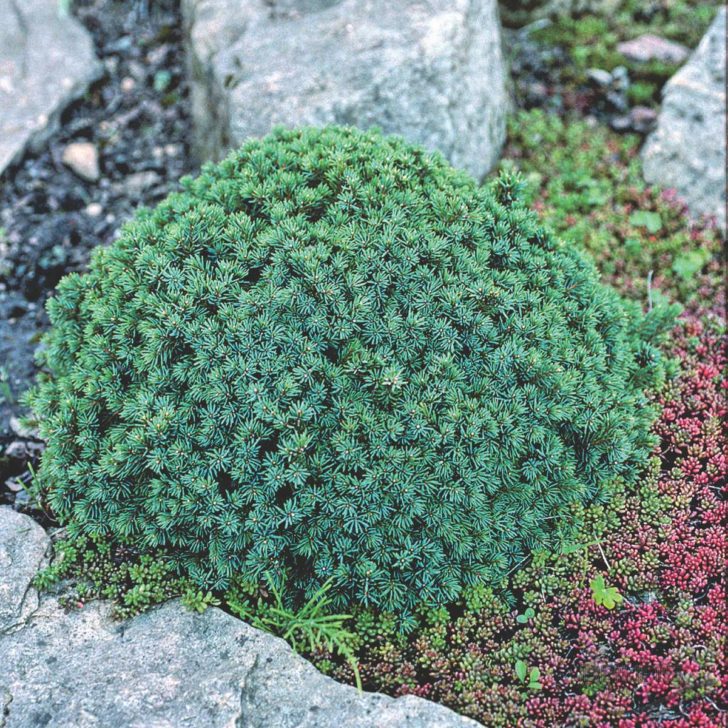
Echiniformis spruce is suitable for decorating alpine slides
A cushion plant that feels great in containers can decorate the entrance group of restaurants, administrative buildings, cottages.
canadian spruce daisy
This dwarf spruce is an excellent mini-copy of the classic Canadian horse. The height of the trees of this variety ranges from 0.8 to 1 meter. For landscape design, Daisy dwarf spruce is chosen for its beautiful cone-shaped crown and unusual coniferous cover. This is the only type of Canadian spruce, the color of the needles of which adapts to the conditions of its habitat. Her crown can be light green, like the common spruce from the photo, and golden yellow, and even white. The needles themselves are short and very delicate, soft to the touch.
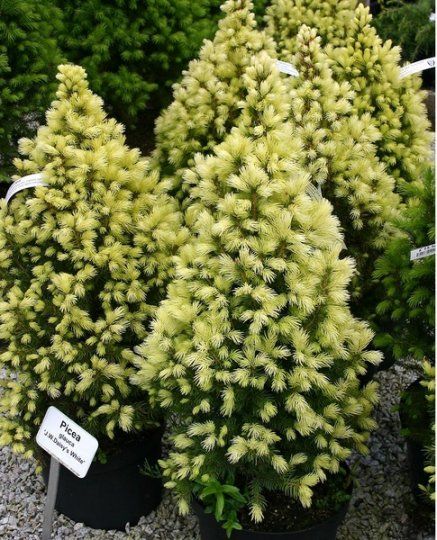
canadian spruce daisy
As for growth, the Canadian Daisy spruce feels great both in the sun and in partial shade, but in the second case, you can forget about the variegated color of the tree. Daisy likes well-drained fertile soils with moderate moisture.
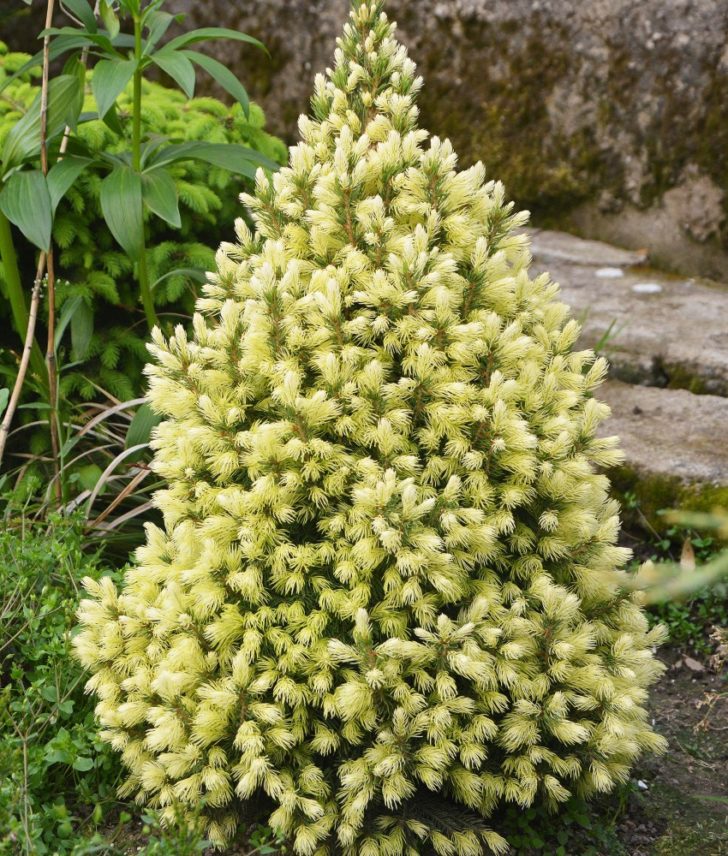
Daisy spruce prefers fertile soil
Scope of application
Like the Echiniformis dwarf spruce, Daisy is used in rock gardens. It is an ideal solution for decorating landscapes of small cottages. A motley baby will become a real gem of a garden plot, regardless of its area and design style. It is the Canadian Echiniformis that is recommended to be planted on the rocky banks of the stream. It successfully coexists with erics, heathers, ornamental bushes.

Daisy spruce is ideal for rock garden decoration
Spruce canadian alberta
The pretty Canadian spruce attracted our gardeners with its roundness. Dwarf alberta is incredibly similar to a fluffy ball, which allows you to decorate with it not only rockeries and rock gardens, as is the case with the Canadian daisy spruce and Echiniformis, but also gardens interpreted in an oriental style. Moreover, the spherical shape of the crown, the Alberta variety retains voluntarily, without regular haircuts.
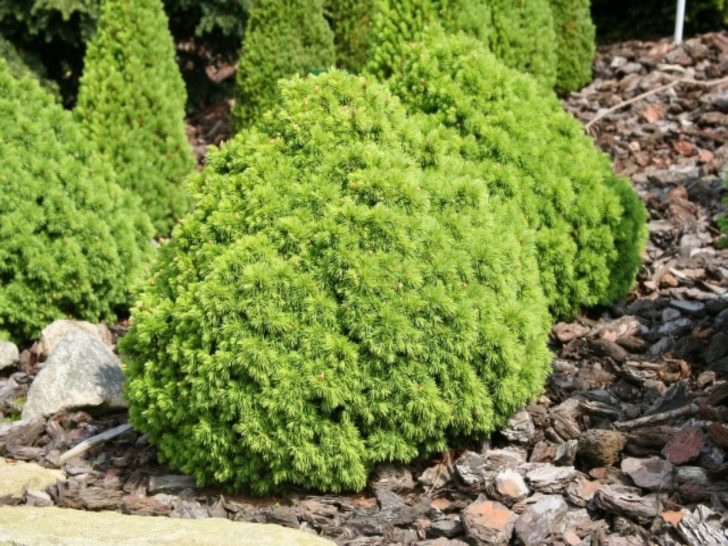
Spruce canadian alberta
Spruce grows slowly. By the age of ten, its height still does not exceed 0.7 m. The diameter of the crown varies from 0.4 to 1 meter. Spruce Canadian Alberta gives short shoots. Its needles are thin, densely growing. Needles up to a centimeter long have a light green color, like the common spruce in the photo, but are more decorative and less prickly.
In relation to the soil, the plant is picky. It grows well on any enriched and moist soils, regardless of their acid-base affiliation. This variety of Canadian spruce does not have to be planted in open ground. It can be kept in pots. The tree is light-loving. Under the sun's rays, it forms a dense and brightly colored crown. If necessary, can live in partial shade.

Spruce alberta is photophilous
Scope of application
Dense spherical dwarf spruce alberta can be found in rock landscape landscaping projects. No less popular than the Canadian Daisy spruce, it is also in the arrangement of rock gardens. Dwarf alberta in itself can become a curiosity of the garden, so it is not necessary to include it only in group plantings. Like the Canadian Echiniformis spruce, a globular spruce planted in containers can serve as a decoration for the entrances to cottages, restaurants and any official buildings.

Alberta spruce can be kept in pots
spruce glauca conica
It was an extraordinary look that brought this little beauty to the world of gardening. Today, this variety of spruce is a component of landscapes in all corners of the planet. She did well in our harsh conditions. The gray conic spruce, which is winter-hardy, can survive wherever a common spruce grows with a photo. The small size has become a big plus of the variety, which allowed the tree to settle in the most modest areas. The average height of the Glauka Konik spruce is about a meter, although with a good content it can stretch to all three. The narrow dense crown has a conical shape. The needles have a beautiful bluish-green tint. It is soft, thin and short.
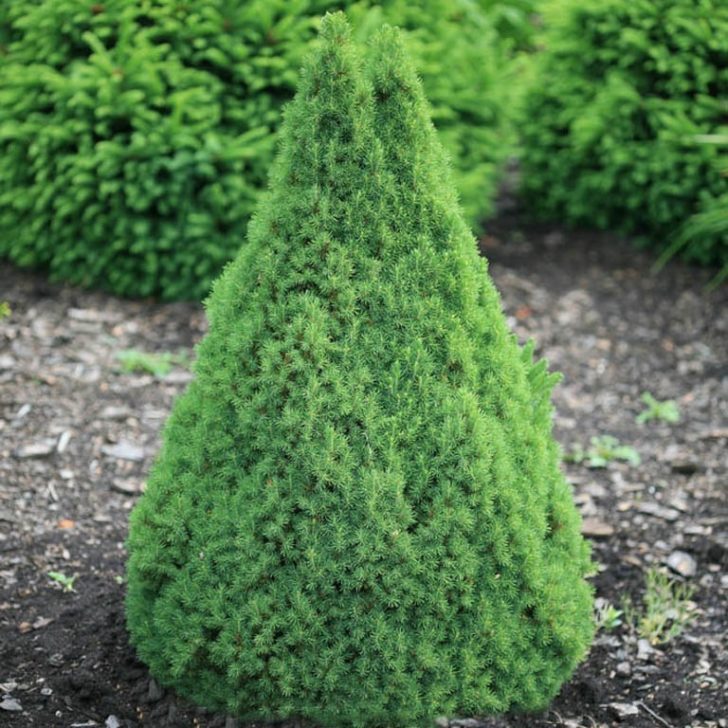
spruce glauca conica
The roots of Koniki are compact. The system is represented by a weakly expressed, rod-type process, from which a network of thin lateral branches departs.
Unlike dwarf Canadian spruces, the gray horse is shade-tolerant, so it may well grow near the fence, in areas behind the house. The open areas of the site are not for her. The needles burn out in the sun. Especially the plant suffers from burns in the event of a sharp spring warming and in winters with little snow.
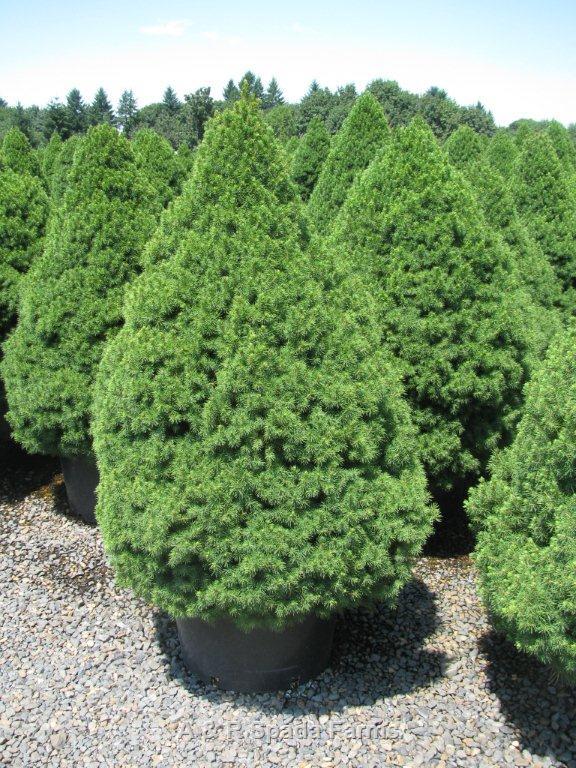
Spruce gray conic shade-tolerant
In addition to sunbathing, Glauka Konika spruce does not respond well to drafts. In general, for its landing, you need to choose a closed, quiet, shaded corner.
What else does the Canadian gray-haired Konika not like? Like all representatives of spruce, it does not tolerate drought, therefore, with a long absence of rain, it must be provided with regular watering.
Scope of application
In landscape design, spruce conic is good in all forms. It perfectly decorates lawns and group plantings. Slow growth does not allow the use of a variety in flower beds, but when the tree reaches an average height, it will fit perfectly into mixborders.

Spruce gray conic fits perfectly into mixborders.
Spruce pendula
This beauty was presented to us by Serbian forests. Slow-growing Pendula with a narrow weeping type of crown, the exact opposite of undersized Canadian Alberta, Daisy. Giving only 10 cm of annual growth, by the age of 30 it can have a height of ten meters. The needles of the pendula cast dark greens. The shoots, like those of the common spruce in the photo, are flexible and lowered along the trunk. The tree is unpretentious. Responds equally well to heat and cold. Belongs to the number of frost-resistant breeds.

Pendula spruce is one of the frost-resistant species.
Easily adapts to areas with a high level of gas and smoke. Spruce pendula is undemanding to the type of soil. The only thing that is contraindicated for her is waterlogging. The plant is highly resistant to diseases and almost too tough for pests.

Pendula spruce is highly disease resistant
Scope of application
Indispensable in group plantings. It looks no less original when planted alone. Pendula spruce will be a welcome guest in gardens where a non-standard landscape solution is expected.

Pendula spruce is suitable for decorating non-standard landscapes
It is also recommended for use in mixed compositions.
back to index ↑Selection of seedlings
Canadian spruce seedlings should be purchased from special nurseries. There are good specimens of plants from professional gardeners. Before making a choice, look for assortment specimens of gray conic, daisy, pendula, echiniformis, common spruces in the photo in the gallery and see what condition the seedlings are in.
What they pay attention to:
1. The condition of the needles. The crown should be thick, gleaming, without areas of dried needles.
2. Soil mixture in a container. It should not be dry and cracked. Roots sticking out of the ground are also a bad sign. Their presence indicates a dimensional discrepancy between the flowerpot and the inferior development of the seedling.
3. Roots. They are examined when acquiring dug-out dwarf spruce trees. The root system must be absolutely intact, without the slightest damage.
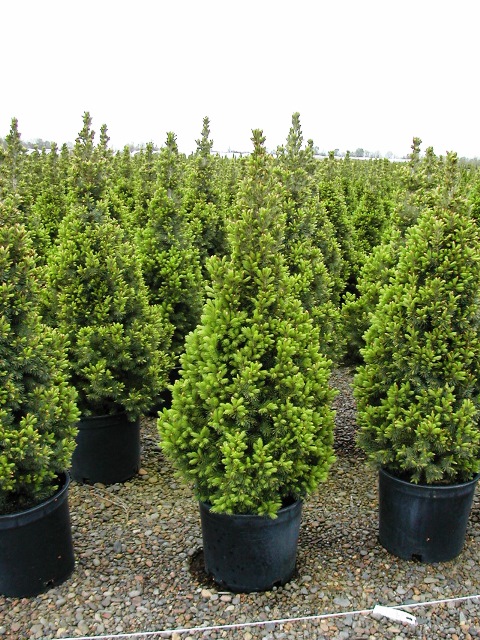
Before buying, carefully inspect the seedlings
Where to plant
All varieties of Canadian spruce are light-loving, but this does not mean that they cannot be planted in partial shade. Young specimens respond especially well to shading, since their delicate needles very often get burned in the sun. But in the thick shade, they ate Canadian gray-gray ones should not be sent. In the complete absence of the sun, the seedlings practically do not grow and lose the beauty of the natural color of the needles. You can peep where to plant dwarf spruce in the photo.
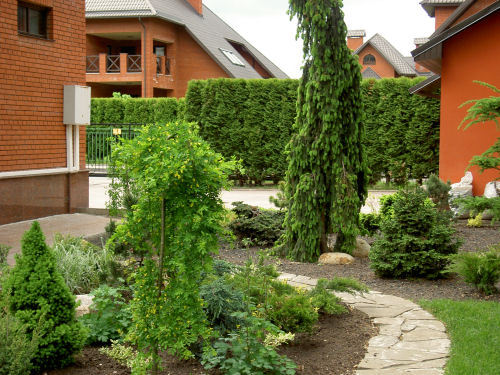
All varieties of Canadian spruce are light-loving
These specimens are good as framing garden paths, in creating natural fences, landscape compositions. Taller Canadian and Norway spruces also have a place in the garden. With their help, you can arrange a rather picturesque landscape.
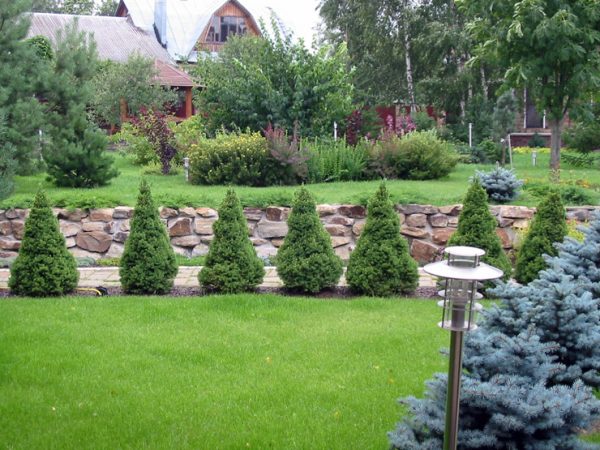
Framing the path with dwarf Canadian spruce
The subtleties of landing
The soil
Canadian spruce should be planted in loamy soil with a high percentage of humus. It shouldn't be known. Spruce prefers moist, but not waterlogged soil, so you will have to take care of the organization of drainage.
When to plant
When to carry out the planting procedure directly depends on the quality and variety of planting material. Provided that the seedling of dwarf spruce is in a container, then you will not have any special restrictions on the time of planting. It will be possible to transfer it to open ground at any time convenient for you, from early spring to late autumn.
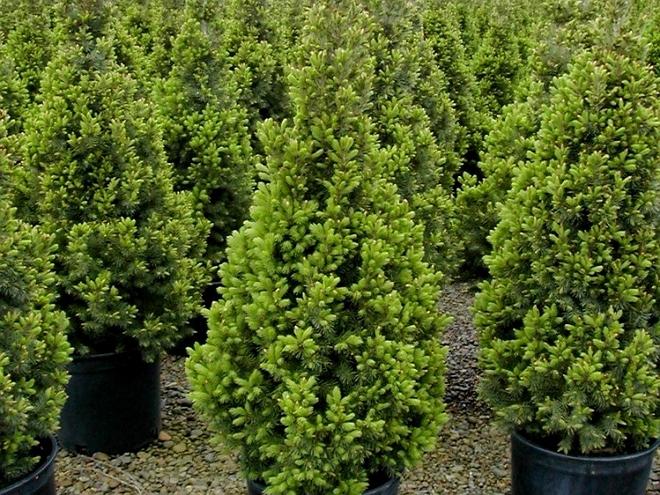
Seedlings in containers are planted from early spring to late autumn.
If the seedlings ate the gray conic or the common spruce were dug out in the nursery, then they will have to be planted in late April - early May. A young tree should have time to take root before the arrival of winter.
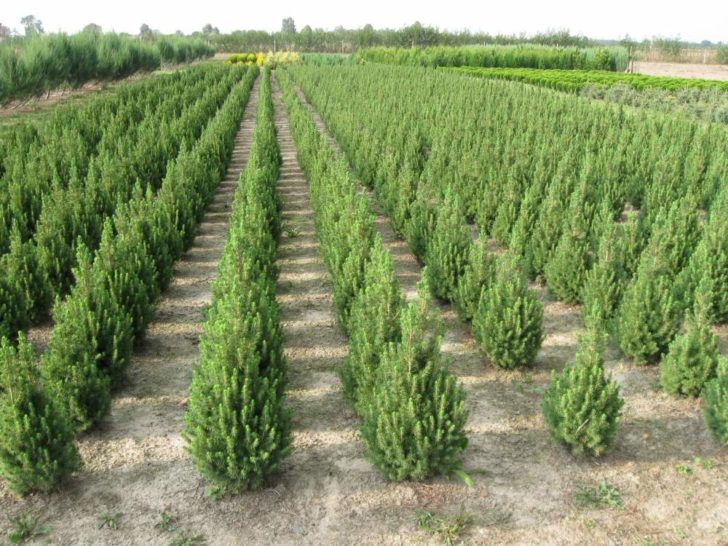
Saplings from the nursery are planted in late April - early May
How to plant
The beginning of the landing procedure is traditional. A planting hole is dug under the seedling. It is made about one and a half times more voluminous than an earthen coma in the roots.

Planting hole for Canadian spruce
Spruce roots are abundantly moisturizing. While they are saturated with water, prepare the soil composition. You can buy it ready-made or make your own by mixing garden soil with compost.
Drainage is laid at the bottom of the pit. For the arrangement of this layer, you can use broken bricks, small stones, expanded clay.
A little earth is poured over the drainage and a seedling of Canadian spruce is sent to the prepared hole.
If the plant was previously in a container, then the transshipment method of planting is used, that is, it is removed from the container along with the available soil, without clearing the root system from it. It is better to cover the seedlings of glauca konik and pendula with soil in stages, slightly compacting and watering each portion sent to the pit.
Falling asleep roots, make sure that the root collar does not fall under the layer of earth.
Planting ends with abundant watering and mulching of the near-stem circle, which is performed with peat or the same compost.
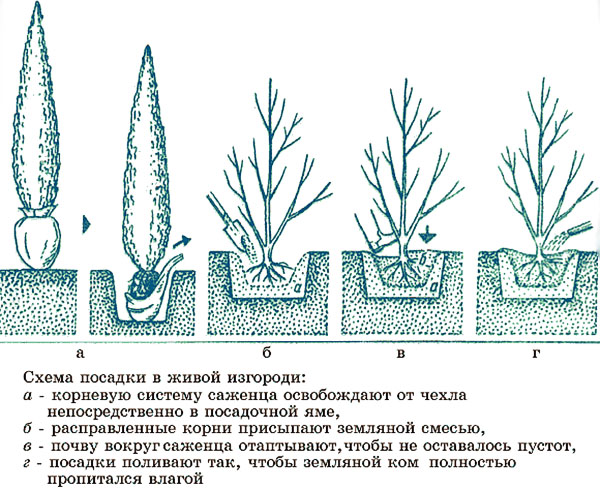
Canadian spruce planting scheme
A planted dwarf or common spruce, even if it belongs to the category of light-loving ones, must be shaded. Burlap is the best protection from the sun. If there is no such material at hand, replace it with kraft paper or a piece of dense fabric of any quality.
You can see the progress of the process of planting spruce, Canadian spruce and pendula in a photo or video on specialized sites.
back to index ↑Dwarf spruce: subtleties of care
"Information about the drought resistance of gray spruces of Konik, Daisy, Echiniformis, Alberta refers exclusively to adult plants, the root system of which is strong and well developed"
A beautiful Canadian spruce can only be grown with proper and regular care.
Watering
Information about the drought resistance of the dove-gray firs of Konik, Daisy, Echiniformis, Alberta refers exclusively to adult plants, the root system of which is strong and well developed. Young growth will require not very frequent, but very plentiful watering. Under each instance, up to ten liters of water should be poured.
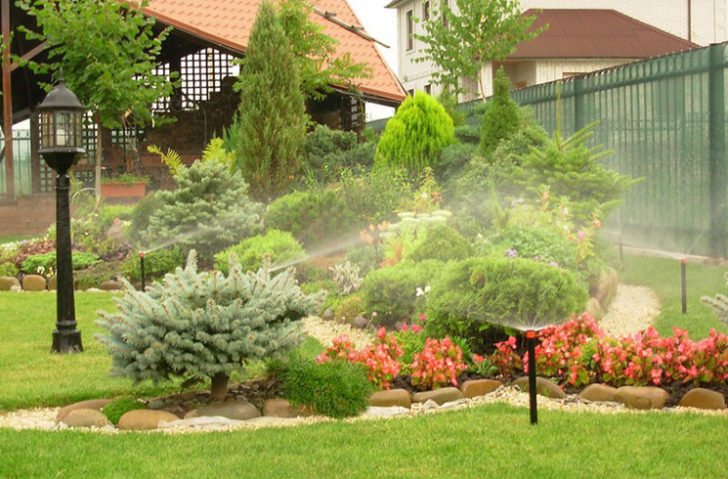
Young Canadian spruce needs regular watering.
Particular attention is paid to the irrigation issue in the autumn period, as this is part of the preparation for wintering. A frequent cause of the death of dwarf spruces during wintering is far from being frost, but the lack of a supply of moisture.
And further: all varieties of Canadian spruce respond very well to canopy irrigation. On dry days, this should not be forgotten.
loosening
When caring for fir trees, this procedure is just as important as adequate watering. It should be performed as the earth dries up in the zone of the near-stem circle. Loosening is carried out with care, since most Canadian dwarf and common spruce have a very superficial root system.
Mulching
This spruce care procedure is aimed at retaining moisture and maintaining a stable temperature in the root zone. Mulch is also good for weed control. Earthworms are very comfortable under mulching, they reproduce there with pleasure, which is well reflected in the condition of the soil. It is constantly loosened and the roots have sufficient ventilation.
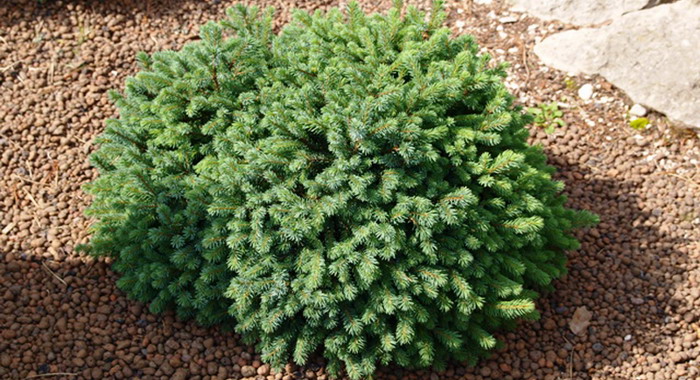
Soil mulching
The best materials for mulch are:
- bark;
- chips;
- sawdust;
- peat.
The optimal layer of mulch is 5 cm.
top dressing
Canadian spruce is not whimsical and, in principle, does not need mandatory feeding, but still, if you want to see the plants in your garden beautiful and strong, they should be fed with special compounds. This is done in any spring month.
In addition to balanced mineral fertilizers, in the care of Canadian fir trees of Konik, Daisy, Alberta and others, it is worth using such organic matter as compost.
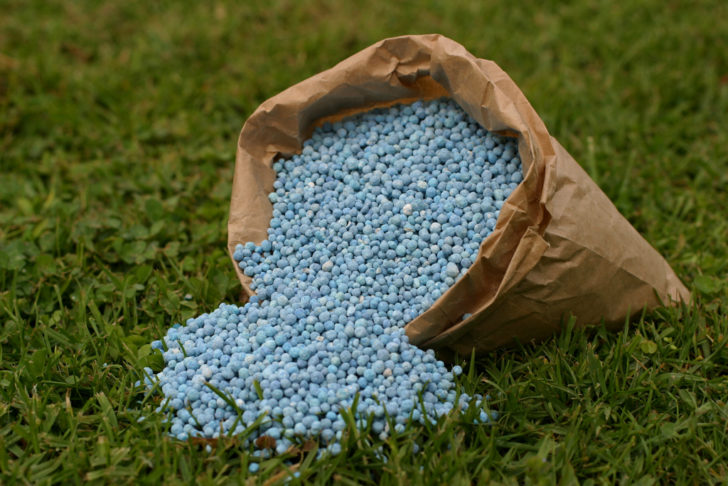
Canadian spruce should be fed with special formulations.
When choosing a fertilizer, make sure that it does not contain a lot of nitrogenous compounds. Nitrogen is detrimental to any representative of the Canadian gray spruce and Pendula spruce.
crown formation
Dwarf spruces, for the most part, initially have more than decorative forms. They can boast of the natural correctness of their formation and density, however, it will not be possible to do without a slight correction. It is recommended to prune once a season. Basically, the procedure is sanitary in nature. In its course, damaged and dried branches are removed. Sometimes it is necessary to shorten several processes that have burst forward. On this, in principle, everything ends.
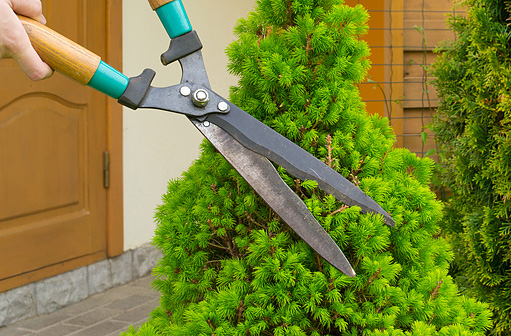
Sanitary pruning is carried out once a season
winter care
The beginning of the snowmelt will be a signal for the release of snow from the Canadian fir trees in your garden. With dwarf spruces, this will not be as easy as with large spreading trees. The snowdrifts crammed inside the dense crown cannot be shaken off with a slight movement, as with ordinary fir trees. Here you have to try to get them out of there.
Leaving snow is not allowed for the following reason. Melted snowdrifts form something like an ice lens, through which the active spring sun will simply burn out the inside of the crown.
If the ice is already fixed inside the coniferous ball of Canadian Alberta spruce and it is impossible to destroy it without damaging the needles, you will have to “decorate” the optics with a layer of earth or black peat. This will allow the ice to come off painlessly for the plant on the first warm day.
Spruce in the house
If you think that unpretentious dwarf Canadian spruces can decorate home window sills, then you are very mistaken. The plant is absolutely not intended for keeping at home. The maximum period of stay in the apartment is 14 days. Then the representatives of the Canadian blue spruces must be planted in the ground or placed directly in the container on the street.Otherwise, the spruce will begin to wither and eventually die.
back to index ↑Conclusion
Canadian spruce in all its varietal variations is an extremely showy plant. The prickly beauty is able to add charm to any type of landing. Becoming an accent of landscape composition, it not only makes the landscape unique, filling it with depth of shades, but creates an atmosphere of expectation of a miracle, inherent in fairy tales. This is enough to settle unpretentious spruces in their summer cottage.
Photo gallery - Canadian spruce
Video

